
The Royal Mausoleum in Oslo, Norway, is located within the Castle of Akershus, where it was established in 1948.

The Royal Mausoleum in Oslo, Norway, is located within the Castle of Akershus, where it was established in 1948.
The Royal Mausoleum contains two sarcophagi: in a white sarcophagus of marble rest King Haakon VII of Norway (1872–1957) and Queen Maud of Norway (1869–1938), née Princess Maud of Wales, [1] [2] and in a green sarcophagus rest King Olav V of Norway (1903–1991) and Crown Princess Märtha of Norway (1901–1954), née Princess of Sweden. [3] [4]
The Royal Mausoleum also contains, in its walls, the remains of King Haakon V of Norway (1270–1319) and Queen Euphemia of Norway (1270–1312), née von Rügen, as well as that of King Sigurd I of Norway (c. 1090–1130). The remains were transferred from St. Mary's Church and St. Hallvard's Cathedral, respectively, both in Oslo.
With few exceptions, burial sites or remains of Norwegian monarchs before 1380 have disappeared. Possible burial sites include the Nidaros Cathedral in Trondheim and either one or more churches in Bergen.
Nearly all Norwegian monarchs between 1380 and 1905 are buried abroad. Confirmed burial sites abroad include:
Predating the official list of Norwegian monarchs (872–present), a large number of petty kings and chieftains are buried in many parts of Norway. Some possible or confirmed burial sites include:

Haakon VII was King of Norway from 18 November 1905 until his death in 1957.
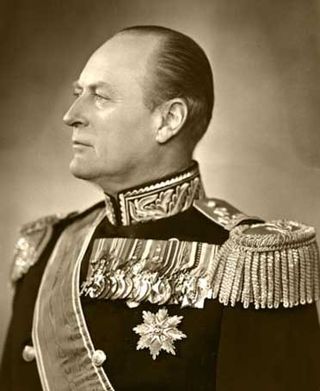
Olav V was King of Norway from 1957 until his death in 1991.

Haakon, Crown Prince of Norway is the heir apparent to the Norwegian throne. He is the only son of King Harald V and Queen Sonja.
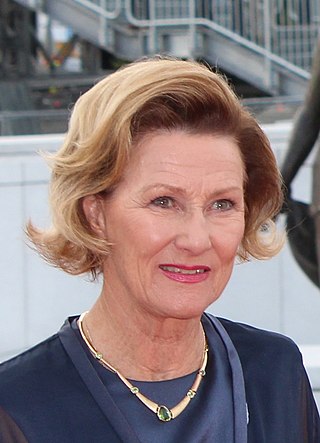
Sonja is Queen of Norway as the wife of King Harald V.

Frederik IX was King of Denmark from 1947 to 1972.
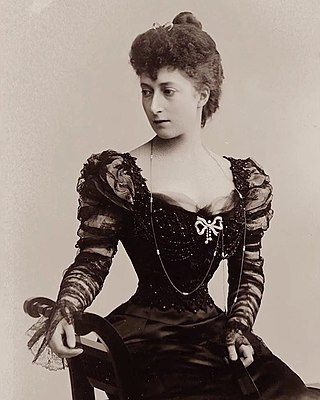
Maud of Wales was Queen of Norway as the wife of King Haakon VII. The youngest daughter of King Edward VII and Queen Alexandra of the United Kingdom, she was known as Princess Maud of Wales before her marriage, as her father was the Prince of Wales at the time.
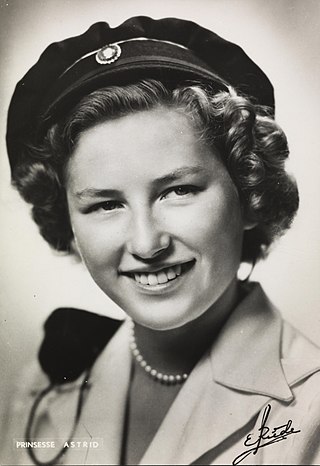
Princess Astrid, Mrs. Ferner is the second daughter of King Olav V and his wife, Princess Märtha of Sweden. She is the older sister of King Harald V of Norway and younger sister of the late Princess Ragnhild.

Princess Ragnhild, Mrs Lorentzen, was the eldest child of King Olav V of Norway and Princess Märtha of Sweden. She was the older sister of King Harald V and Princess Astrid. She was the first Norwegian royal to have been born in Norway since the Middle Ages. In 1953 she married the industrialist Erling Lorentzen, a member of the Lorentzen family of shipping magnates. In the same year they moved to Brazil, where her husband was an industrialist and a main owner of Aracruz Celulose. She lived in Brazil until her death 59 years later.

The Royal Palace in Oslo was built in the first half of the 19th century as the Norwegian residence of the French-born King Charles XIV John, who reigned as king of Norway and Sweden. The palace is the official residence of the current Norwegian monarch while the Crown Prince resides at Skaugum in Asker west of Oslo.
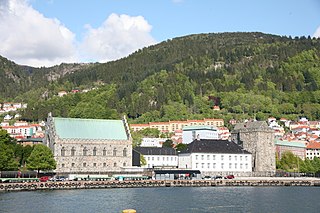
Bergenhus fortress is a fortress located in Bergen, Norway. Located at the entrance of Bergen harbour, the castle is one of the oldest and best preserved stone fortifications in Norway.
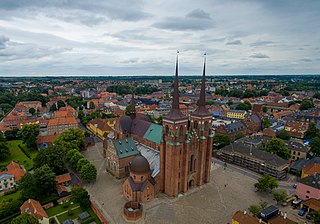
Roskilde Cathedral, in the city of Roskilde on the island of Zealand (Sjælland) in eastern Denmark, is a cathedral of the Lutheran Church of Denmark.
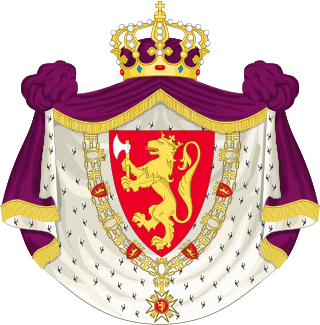
Members of the Norwegian royal family are people related to King Harald V of Norway or former Norwegian monarchs. The current family who holds the throne are members of the House of Glücksburg who ascended to the Norwegian throne after the election of Prince Carl of Denmark as King of Norway during the dissolution of the Swedish-Norwegian union in 1905.

Arnstein Rynning Arneberg was a Norwegian architect. He was active professionally for 50 years and is often considered the leading architect in Norway of his time.

The Norwegian monarch is the head of state of Norway, which is a constitutional and hereditary monarchy with a parliamentary system. The Norwegian monarchy can trace its line back to the reign of Harald Fairhair and the previous petty kingdoms which were united to form Norway; it has been in unions with both Sweden and Denmark for long periods.

Christina of Norway was the daughter of Håkon IV and his wife, Margaret Skulesdatter. She was born in Bergen. As part of an alliance she was betrothed to Philip, brother of Alfonso X of Castile. They married in 1258, and she lived in Castile until her death four years later. Tradition states that Christina desired that a church dedicated to St Olaf should be built in Castile. 750 years later, "a modernized version of [a] simple pre-Roman church" was built and dedicated in Covarrubias, Spain.

Prince Harald of Denmark was a member of the Danish Royal Family. He was the third son and fourth child of Frederick VIII of Denmark and his wife, Lovisa of Sweden, and thus brother to Christian X of Denmark and Haakon VII of Norway.

A referendum on retaining the monarchy or becoming a republic was held in Norway on 12 and 13 November 1905. Voters were asked whether they approved of the Storting's decision to authorise the government to make the offer of the throne of the newly self-ruling country. The Storting had wanted to offer the throne to Prince Carl of Denmark, but the prince insisted that the Norwegian people have a chance to decide whether they wanted to retain a monarchy.
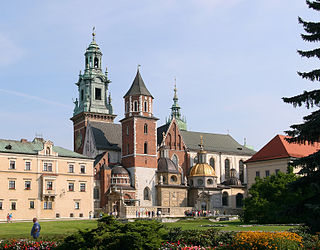
This list contains all European emperors, kings and regent princes and their consorts as well as well-known crown princes since the Middle Ages, whereas the lists are starting with either the beginning of the monarchy or with a change of the dynasty. In addition, it contains the still-existing principalities of Monaco and Liechtenstein and the Grand-Duchy of Luxembourg.

Coronations were held in Norway from 1164 to 1906, mostly in the Nidaros Cathedral in Trondheim. Although a crowning ceremony was formerly mandated by the nation's constitution, this requirement was eliminated in 1908. However, Norwegian kings have since chosen voluntarily to take part in a ritual of "benediction" to mark their accession to the throne, during which the crown is present, but not physically bestowed upon the sovereign. The new ceremony retains some of the religious elements of earlier rites, while eliminating other features now considered to be "undemocratic". There is no law preventing a coronation from occurring so any future monarch of Norway can choose to have one.
The Royal House Centennial Medal is a Norwegian award established by Harald V of Norway to commemorate the centennial of the Norwegian royal family. The day that it was established marks the hundredth anniversary of the day that Haakon VII arrived in Norway: November 25, 1905. The medal ranks 29th in the Norwegian decoration order of precedence.